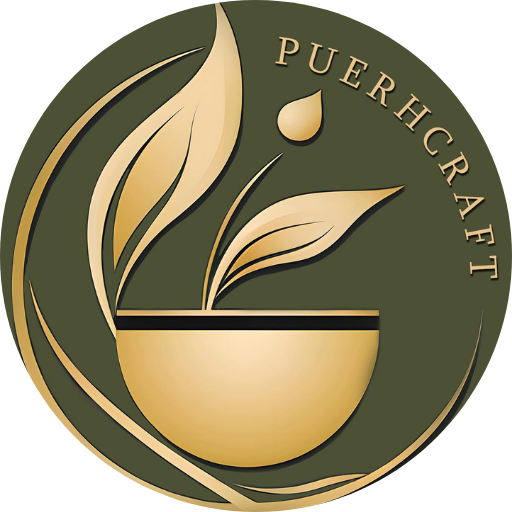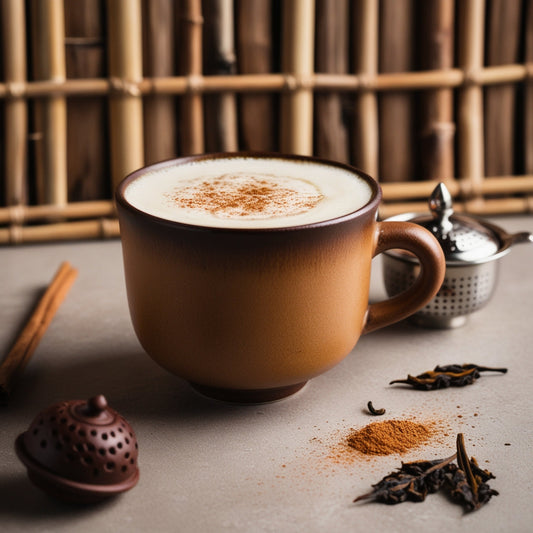Introduction
Do you know that you can maintain your natural weight and overall wellness just by adding of Pu-erh tea into your daily routine as a healthy tea option? Then you are in the right place. Pu-erh tea is a gentle aid in weight management and overall wellness. Discover the health benefits of ethically sourced, organic and healthytea Pu-erh .
Table of Content
- Introduction
- Health Benefits
- Incorporating Pu-erh Tea into Your Routine
- Types of Pu-erh tea
- Conclusion
Health Benefits of Pu-erh Tea
Weight Management
One of the most celebrated health benefits of Pu-erh tea is its potential to aid in weight management. Studies have shown that Pu-erh tea can help reduce body fat and lower cholesterol levels. The fermentation process produces compounds that can enhance fat metabolism. Additionally, Pu-erh tea can aid in digestion, making it easier for the body to process and eliminate fats.
Digestive Health
Pu-erh tea is renowned for its ability to improve digestive health. The fermentation process increases the production of beneficial probiotics, which can help balance the gut bacteria. Drinking Pu-erh tea can alleviate symptoms of indigestion, bloating, and constipation, promoting a healthier digestive system.
Cardiovascular Health
Regular consumption of Pu-erh tea linked to improved cardiovascular health. The tea contains antioxidants such as catechins and flavonoids, which can reduce oxidative stress and inflammation. These antioxidants help lower LDL (bad) cholesterol levels and increase HDL (good) cholesterol, reducing the risk of heart disease.

Blood Sugar Regulation
Pu-erh tea can also play a role in regulating blood sugar levels. Some studies suggest that the compounds in Pu-erh tea can enhance insulin sensitivity and reduce blood glucose levels. This makes it a beneficial drink for individuals with diabetes or those at risk of developing the condition.
Anti-Cancer Properties
Emerging research indicates that Pu-erh tea may have anti-cancer properties. The tea's high antioxidant content can help protect cells from damage caused by free radicals, potentially reducing the risk of cancer.
Incorporating Pu-erh Tea into Your Routine
Morning Boost
Start your day with a cup of Pu-erh tea to kick start your metabolism and energize your body. The gentle caffeine content can provide a boost without the uneasiness often associated with coffee.
Post-Meal Digestive Aid
Enjoy Pu-erh tea after meals to aid digestion and prevent bloating. The tea's probiotics and digestive enzymes can help break down food more efficiently.
Afternoon
Swap your afternoon coffee for Pu-erh tea. The steady release of energy can help you stay focused and alert without the caffeine crash.
Evening Relaxation
Opt for a cup of Sheng Cha" (green or raw Pu-erh) or Shu Cha" (fermented Pu-erh (also called red, ripe or dark Pu-erh) in the evening. The soothing properties can help you unwind and prepare for a restful night's sleep.
Types of Pu-erh tea
There are two major types of Pu-erh tea: "Raw Pu-erh" and "Ripe Pu-erh". These two Pu-erh types are distinguished by their respective fermentation processes. Both types of Pu-erh are made from the same raw materials (Mao cha) - freshly harvested leaves that have been wilted, either fried manually or tumbled through a heated rotating cylinder, kneaded and sun-dried in the open air.
Raw Pu-erh
The term "Raw Pu-erh" refers to loose leaves, tea cakes or bricks made from raw materials without additional processing. Raw Pu-erh can be consumed immediately to enjoy its fresh, floral or fruity flavours, or it can be left to age in a natural environment for years or decades to achieve a mellower, smoother and more complex flavor. Naturally aged Raw Pu-erh teas, particularly those made from premium raw materials, are the most sought-after.

Ripe Pu-erh
"Ripe Pu-erh" offers an alternative to having to wait ten to thirty years for the Raw Pu-erh to mature and achieve the aged flavor that is popular among many Chinese. In the 1970's, the industry developed a method to artificially accelerate the aging process by "cooking" Pu-erh tea. This "cooking" process, called "wo dui", involves incubating the tea in a moisture-rich environment where microbial activity causes the temperature to rise, drastically intensifying the fermentation process. This process typically takes a few months to complete.
Here are some comparisons between a raw and a ripe Pu-erh
Time required to achieve full fermentation
Raw: 20-30 years.
Ripe: A few months.
Taste differences
Raw: As the tea ages, it becomes more complex and is famous for its stronger mouth sensation and long-lasting aftertaste.
Ripe: Earthy and mellow. Aged ripe Pu-erh becomes smoother and the earthy flavor transforms into the sweet plum flavor.
Colour of the brew
Raw: Golden yellow to burnt orange, depending on the age of the tea
Ripe: Dark chestnut Appearance of the leaves: Raw: The brewed leaves of raw Pu-erh are more intact, plump and soft. Ripe: The brewed leaves of ripe Pu-erh are generally broken, black in color and no longer soft.
Whether fermented naturally or manually, studies have shown that the microbial activity in Pu-erh tea offers probiotic health benefits that no other teas offer.
Conclusion
Health benefits of Pu-erh Tea include Weight management, good for Digestion, reduce oxidative stress and inflammation, enhance insulin sensitivity and reduce blood glucose levels, potentially reducing the risk of cancer. Pu-erh tea can kick start your metabolism and energize your body by having it in the morning, digestion and prevent bloating by consuming it post meal, help you stay focused and alert without the caffeine crash in the afternoon, prepare for a restful night's sleep. Whether fermented naturally or manually, studies have shown that the microbial activity in Pu-erh tea offers probiotic health benefits that no other teas offer.
For today’s health conscious world who are seeking natural products to aid in health benefits and Overall wellness Pu-erh Tea is the healthy tea option. So by adding Pu-erh Tea to your daily routine you can achieve physical and mental stability without compromising in the taste.For a reliable selection of genuine Pu-erh tea, visit Pu-erh Craft.
Q&A Section
Q: What makes Pu-erh tea effective for weight management?
A: Pu-erh tea aids in weight management due to its unique fermentation process, which produces compounds that enhance fat metabolism. Studies have shown that regular consumption of Pu-erh tea can help reduce body fat and lower cholesterol levels. Additionally, its ability to improve digestion supports the efficient processing and elimination of fats.
Q: How does Pu-erh tea improve digestive health?
A: The fermentation process of Pu-erh tea increases the production of beneficial probiotics, which help balance gut bacteria. This can alleviate symptoms of indigestion, bloating, and constipation. Drinking Pu-erh tea regularly promotes a healthier digestive system by enhancing the breakdown and absorption of nutrients.
Q: Can Pu-erh tea really help with cardiovascular health?
A: Yes, Pu-erh tea contains antioxidants such as catechins and flavonoids that reduce oxidative stress and inflammation, which are key factors in cardiovascular health. These antioxidants help lower LDL (bad) cholesterol levels and increase HDL (good) cholesterol levels, thus reducing the risk of heart disease.
Q: Is Pu-erh tea beneficial for individuals with diabetes?
A4: Pu-erh tea can be beneficial for individuals with diabetes or those at risk of developing the condition. Compounds in Pu-erh tea have been shown to enhance insulin sensitivity and reduce blood glucose levels, helping to regulate blood sugar levels effectively.
Q: What are the differences between Raw Pu-erh and Ripe Pu-erh tea?
A: Raw Pu-erh tea is made from loose leaves, tea cakes, or bricks without additional processing and can be consumed immediately or aged for a mellower flavor. It has a stronger, more complex flavor as it ages. Ripe Pu-erh, on the other hand, undergoes an accelerated fermentation process called "wo dui" that mimics natural aging, resulting in an earthy and mellow taste. The brewed leaves of Raw Pu-erh are more intact and plump, while those of Ripe Pu-erh are generally broken and black in color.






